
Original Link: https://www.anandtech.com/show/1256
Weekly Buyer's Guide: Cutting Edge System - March 2004
by Evan Lieb on March 3, 2004 12:57 PM EST- Posted in
- Guides
Today, we release our third Buyer's Guide in the last 3 weeks. Again, for those new to our Buyer's Guides, you can look forward to them every week, and after the end of each month, we will retool our guides to reflect the new hardware and pricing of that particular time period. The basic format of these guides are as follows:
Week 1: Budget System
Week 2: Mid-Range System
Week 3: Cutting Edge System
Week 4: Overclocking System
For every component that goes into a computer, we pick our favorite piece of hardware as well as our runner-up piece of hardware. We've added runner-up hardware picks to our guides because it allows AnandTech to recommend a wider variety of hardware (especially for those willing to spend a little more than what we budget for a particular system). At the same time, we can be assertive enough with a first place recommendation so that new buyers aren't indecisive or confused about what to purchase. Most of the prices listed for the hardware that we recommend can be found in our very own RealTime Pricing Engine. Any prices not found in our engine can be found on pricewatch.com. In addition to our Buyer's Guides and RealTime pricing engine, we suggest that you peruse our Price Guides so that you are not only informed about the best hardware for your computing needs, but also where to find the best deals on that hardware.
We are always taking suggestions on how to improve our Buyer's Guides. If you feel we are not including a wide enough variety of systems in our guides, please let us know and we can see if it warrants an additional weekly Buyer's Guide.
Cutting Edge Computing
Before we go into a little detail about what you need to know about building a cutting edge system, we need to first reiterate what you should remember about budget and mid-range systems.- Budget systems should be constructed mainly with reliability and price in mind, with performance a fairly distant third consideration.
- Mid-range systems place reliability as a number one priority, but performance and price are in a sort of not-so-distant tie for second place here.
Anyway, when building a cutting edge system, performance is usually going to be your most important consideration. That is, when building a cutting edge system, you want to make sure you're picking the hardware that performs the best for the programs you use the most. While you could say that reliability is the second most important consideration when building a cutting edge system, it would probably be more appropriate to say that reliability is #1a priority. Understandably, price is a distant third consideration. This should be pretty self explanatory, as anyone who is considering building a top-of-the-line system needs to realize that parts aren't going to be cheap, obviously. This guide by no means disregards price altogether, as we aren't going to be building a $10,000 system here. What we are building is a system that will cost under $5,000, but with the final price much closer to $1,000 than $5,000.
With that information in mind, read on to find out our picks for best cutting edge components this week...
Cutting Edge System
CPU
Recommendation: AMD Athlon 64 3400+ 1MB L2 cache (2.2GHz) Hammer corePrice: $414 shipped (retail with heatsink and fan)

For the third week in a row, we recommend yet another AMD Athlon processor. This time, it's AMD's Hammer series of processor, dubbed the Athlon 64. This choice was probably one of the most difficult of all the choices here today, as both AMD and Intel offer blazingly fast processors for almost exactly the same price at this particular speed grade. However, what finally pushed us over the top was the Athlon 64 3400+'s 64-bit capability. Since all current Pentium 4 processors can only run 32-bit code, AMD's Athlon 64 is unique because it can run 32-bit code just as well the competition in addition to 64-bit code. This will be advantageous to users because later this year, 64-bit compatible applications (for example, video games such as Unreal Tournament) will be released to the public as well as Microsoft's Windows XP 64-bit Edition, which contains support for AMD's Athlon 64 processor. As you may have read right here on AnandTech, we conducted several tests with the preview version of Windows XP 64-bit Edition and were impressed by some of the performance gains that 64-bit computing is able to bring to the desktop. The poor results that we received in other areas with the beta version of Windows XP 64-bit Edition were almost solely due to the fact that we did not have complete drivers. However, by the end of the year, or possibly sooner, this will not be the case because complete drivers and 64-bit applications will be available, and we're likely to see even more performance gains from having a 64-bit processor.
Runner-up: Intel Pentium 4 3.4C (512K L2 cache) Northwood
Price: $421 shipped (retail with heatsink and fan)

The highest-end version of Intel's Northwood core (the 3.4C) chosen here today came in a close second behind AMD's Athlon 64 3400+. Both offer virtually the same performance in today's applications depending on exactly which applications you use. If you're strictly a desktop user and do a lot of encoding, then you will want to stick to the 3.4C over the 3400+ for now. If you're a gamer, then you should stick to the 3400+ instead of the 3.4C. We suggest that you research for yourself and see which processor fits you best by first reading AnandTech's latest CPU article on this matter. One other advantage of going with a Pentium 4 is Hyper Threading. Hyper Threading can increase performance quite drastically in multi-tasking situations, but is less and less noticeable as clock speed increases. In today's applications, HT offers very little benefit, though future iterations of HT that we haven't tested yet are supposed to be promising.
One thing we'd like to make clear before you move on is the labeling system Intel uses with their high-end processors. An Intel Pentium 4 labeled with a "C" after its core clock speed (3.4C in this case) is based on the Northwood core, has 512K of L2 cache, and is built on (mostly) 0.13-micron technology. A Pentium 4 labeled with an "E" after its core clock speed (3.4E for example) is based on the Prescott core, has 1MB of L2 cache, and is built on (mostly) 0.09-micron technology. Finally, a Pentium 4 labeled with an "EE" after its core clock speed (3.4EE for example) is based on the Northwood core, has 512K of L2 cache plus 2MB of L3 cache, and is built on (mostly) 0.13-micron technology. The C, E, and EE Pentium 4 processors all run at 800MHz FSB and are dual channel DDR capable. We explained in great detail why you want to stay away from Prescott E processors here. If you can spare the money, the Pentium 4 EE (Extreme Edition) processors are considered to be the absolute fastest available desktop processors, slightly inching out rival AMD's Athlon 64 FX51. However, prices for these processors are extremely prohibitive, especially the Pentium 4 EE processors, and why we can't recommend either the Pentium 4 EE or Athlon 64 FX processors here today.
Motherboard
Recommendation: ASUS K8V Deluxe (VIA K8T800 chipset)Price: $139 shipped

The ASUS K8V Deluxe offers several different advantages and features over other Socket 754 Athlon 64 motherboards that make it our recommendation today. First off, the K8V Deluxe's combined performance and price is superb; the K8T800 chipset's outstanding performance combined with features like Serial ATA (RAID), Gigabit Ethernet, IEEE 1394 FireWire, SPDIF, and IDE RAID, among other nice features makes the K8V Deluxe a great high end board for the price. Normally, we could care less about the price for a cutting edge system like this, assuming we're not talking over $200, but for $140, it's truly amazing the number of cutting edge features that can fit on a motherboard these days. Of course, this is not to mention the renowned reliability of ASUS motherboards. Having extensively tested the K8V Deluxe, we can assure that you will indeed enjoy a reliable and trouble free experience for the most part. Overclockers may be especially pleased with this motherboard if they delve into Athlon 64 territory.
Recommendation: ABIT IC7-G MAXII Advance (875P chipset)
Price: $147 shipped
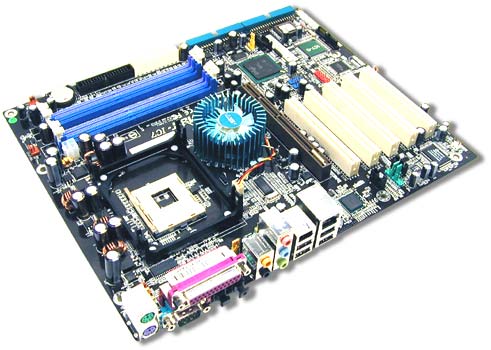
Last summer the Gigabyte 8KNXP was our pick for best high end Pentium 4 motherboard, but since then, we believe that the ABIT IC7-G has edged out the 8KNXP due to the fact that it offers virtually the exact same number of features and performance for $50 less, while last summer, the IC7-G was more expensive. Price usually isn't a concern with a cutting edge system like the one we're recommending here today, but saving $50 and getting a motherboard that's basically as good is never a bad idea how ever you cut it. Anyway, the ABIT IC7-G's mix of Gigabit Ethernet, SPDIF, 3 X IEEE 1394 FireWire ports, and Serial ATA RAID among other features, combined with the industry leading performance and stability of the Intel 875P chipset are the primary reasons why we choose ABIT's IC7-G. Another reason why we choose this motherboard for a cutting edge system is because we've tested virtually every high-end Pentium 4 motherboard in existence over the past 12 months, and to this day, we still can say confidently that the reliability and stability of this ABIT motherboard has been excellent. This exact motherboard is used in one of AnandTech's very own computer labs and I have personally built several high-end gaming systems centered on this motherboard. All in all, the performance, reliability and even the price are stellar.
Cutting Edge System (continued)
Memory
Recommendation: 2 X 512MB Mushkin PC3500 Level One Dual Pack (CAS2)Price: $215 shipped
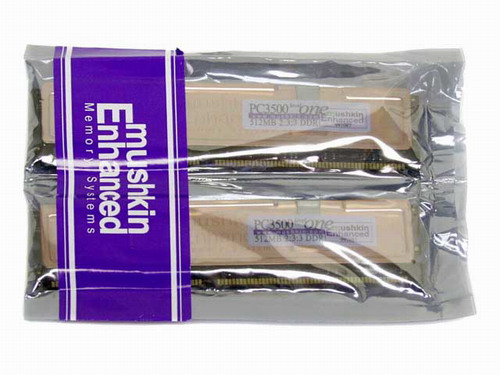
While companies like Corsair, OCZ and now Kingston are heavy favorites among high-end memory consumers, Mushkin is also starting to gain favor rapidly. While we haven't raved about Mushkin modules in previous reviews, we've been quietly impressed with their performance, reliability, and price. Unfortunately, it is getting harder and harder to find dual packs nowadays; but Mushkin Dual Packs are available at large vendors like Axion and Newegg at any rate, so they're still out there. We've been able to do lots of testing with these specific PC3500 modules and they indeed run stabily at PC3500 (433MHz DDR) on many currently available motherboards. There are many PC3500 modules that aren't capable of reliable DDR433 speeds on popular motherboards, so be wary. But motherboards such as the ASUS K8V Deluxe and ABIT IC7-G will run these modules very well, so we suggest that you take a look at them when purchasing your motherboard. However, don't get confused. PC3500 is not an officially sanctioned JEDEC spec, and therefore there are no motherboards on the market which can claim that they officially support PC3500 speeds. PC3500 is quite easily attainable with modern motherboards, but just be aware that PC3200, not PC3500, is the highest speed that your motherboard manufacturer will officially support under warranty.
Runner-up: 2 X 512MB OCZ PC3700 GOLD Revision 2 (CAS2.5)
Price: $265 shipped

After developing a reputation based on shoddy business practices, not to mention shoddy memory, OCZ has come roaring back and has gained wide acceptance among enthusiasts and average users alike after many months of wary purchasing and close inspection by hardware web sites like AnandTech. We've raved about OCZ modules in many reviews over the last few months (like this review), and have been extremely pleased with the results that we've been getting. OCZ modules have gone from disappointing and unreliable to impressive and dependable in what seems like an overnight transformation. OCZ still has a ways to go to gain acceptance among doubters who have never tried their memory or continue to hold onto conspiracy theories about their link to the OCZ of old, but we aren't placing OCZ's GOLD Rev. 2 PC3700 modules as runner-up based on whim, so take that to heart. The GOLD series is capable of a low CAS2.5 at DDR466 speeds (PC3700) and has a huge ceiling for overclockers. If you're not an overclocker, then obviously the GOLD series will not be of much value to you. If you are overclocking, just remember that you take a risk by overclocking your memory, both in terms of voiding warranties and damaging hardware. Beginners need not apply for overclocking.
Video
Recommendation: 256MB PowerColor Radeon 9800XT (412MHz), DVI, TV-outPrice: $415 shipped
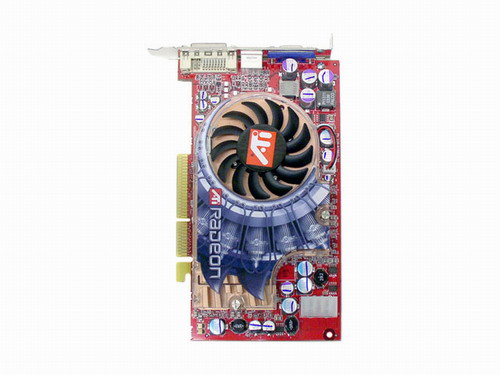
As we mentioned in a previous guide, ATI has had a firm grasp on the add-in desktop video market for quite some time now. While ATI's lead is quite noticeable at the low end and fairly noticeable with the mid-range sector, their lead in cutting edge isn't quite as drastic. It's still there, as even AnandTech has concluded that the 9800XT is more or less the fastest desktop gaming GPU (Graphics Processing Unit) currently available. Still, NVIDIA's 5950 Ultra closely trails the 9800XT (more on the 5950 in a moment) enough in current games in terms of speed and IQ (image quality) that it's pretty clear the 9800XT is the superior cutting edge product. That's why we recommend it today, with the manufacturer, PowerColor, yet again. With this card, you get DVI (if you have an LCD), TV-out, and 256MB of memory. The 256MB of memory will come in very handy with future DX9 titles, though not for quite some time. Overall, you're getting an incredible gaming card here. However, if you're curious about how to save a little cash without sacrificing much performance, we suggest that you check out a 128MB 9800 Pro (from any manufacturer you choose) for about $215 shipped. It contains half the memory (128MB instead of 256MB), which may hurt performance a little, but won't be at all noticeable in current games, and is only on average about 5%-10% slower in current games.
Runner-up: 256MB Leadtek GeForce FX 5950 Ultra, DVI/VIVO
Price: $390
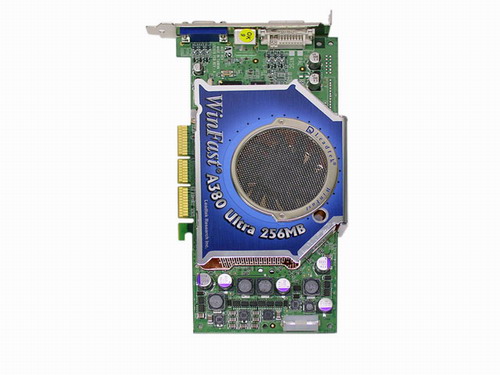
The GeForce FX 5950 isn't quite as fast as ATI's 9800XT video cards nor is the IQ as good in current games, but where NVIDIA has done a good job is pricing. On average, 9800XT cards are $40 more than their GeForce FX 5950 competition. For a slight performance edge, that's not a small amount of cash. True, this isn't a video card for a budget system, this is for a cutting edge system, and so $40 may be insignificant in the grand scheme of things. Still, it's something to ponder if you have a certain dollar amount you don't want to exceed with this system. Anyway, Leadtek manufacturers the particular GeForce FX 5950 that we're recommending here today. We like this model's cooling configuration/style, bundled software, Leadtek support, and features like VIVO and DVI.
We'd be remiss not to mention that several high-end video cards will be launched in a couple months that should end up being considerably faster than the Radeon 9800XT and GeForce FX 5950 Ultra. Therefore, if you do not have an urgent need to build your system, we suggest waiting for the release of these new high-end video cards. It's not the end of the world if you build your high-end system today with a 9800XT or 5950 Ultra, both cards offer tremendous performance in today's video games and most future games. However, just be aware that something will come along in a couple months that will be much faster for the same price or less, depending on exactly what models are launched.
Monitor
Recommendation: Samsung 1100DF 21" (20" viewable) DynaFlat CRTPrice: $420 shipped
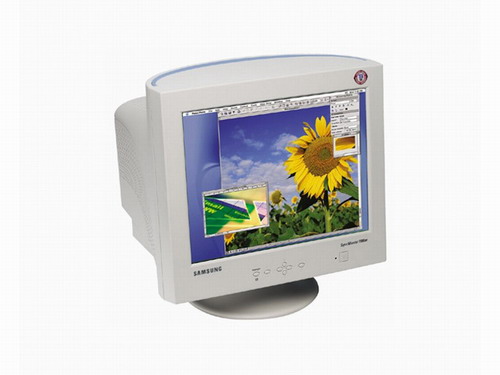
Not only does Samsung make a great mid-range monitor with their 955DF series, they make a great high-end monitor with their 1100DF series too. The 1100DF is capable of refresh rates of 75Hz at 2048x1536 and 85Hz at 1280x1024 and has a dot pitch of 0.20mm. Text clarity is very impressive, glare is non-existent, and gaming performance is top-of-the-line.
Runner-up: Philips 22" (20" viewable) 202P45 CRT
Price: $497 shipped
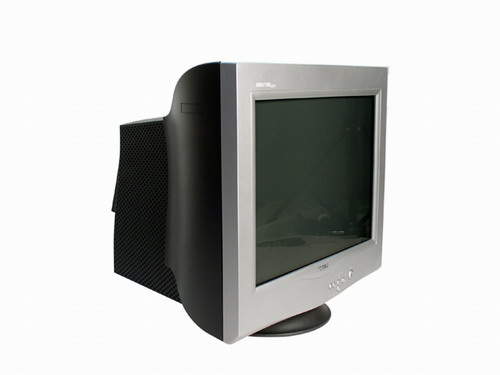
The 202P45 may cost $80 more, but its performance is nothing short of outstanding. The 202P45 has features like a max resolution of 2048x1536 @ 80Hz (1600x1200 @ 85Hz) and a 0.25mm dot pitch aperture grille. The aperture grille is what makes this monitor particularly special. Going by its word for word definition, the aperture grille is a series of vertical wires stretched vertically down the inside of a CRT to mask the beams from the electron guns at the back of the tube. What the 202P45's flat aperture grille essentially does is help to minimize the geometric distortion that users will see on increasingly larger screens, like this 22" monitor. With this feature, the 202P45 is basically able to display a more precise and accurate picture with sharp overall text clarity compared to monitors without flat aperture grille technology. Because of this feature, the 202P45 is truly one of the best 22" monitors on the market that doesn't force you to take out a second mortgage on the house.
Cutting Edge System (continued)
Computer Case
Recommendation: Kingwin K11 Aluminum ATX casePrice: $70 shipped
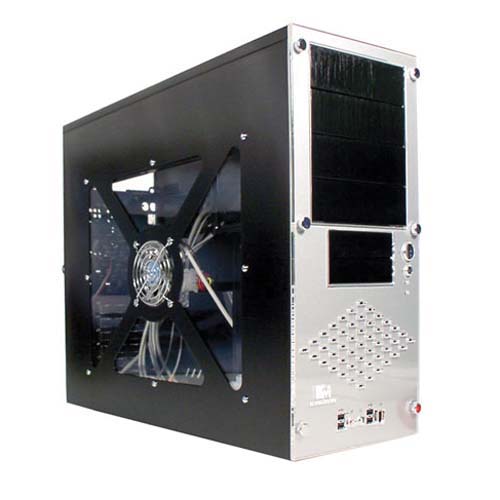
We suggested Kingwin last week as the runner-up, but will place it as our recommendation this week because of how much we enjoy building systems with this case. Kingwin makes great aluminum computer cases; this particular one is dubbed the K11 series. Even with all your components installed, the case is still relatively light, even light enough to carry to a LAN party or to bring over to your friend's or family's house. It comes with four 5.25" Bays, two external 3.5" Bays and five internal 3.5" bays, four USB 2.0 ports, and one Audio, Mic, FireWire port. There are one top, one rear, and two front fans included as well. The case construction and quality is quite good; the material isn't cheap or flimsy by any means.
For a power supply, we suggest Antec's 400W PSU (SL400) for $55 shipped. It provides stable voltages, a good warranty, fairly quiet operation, low operating temperature, and in general is reliable and trusted among enthusiasts. Truth be told, a quality 350W or even 300W power supply may do the job just as well, but since the price difference is minimal at best and because this system draws a large amount of power anyway (3400+, 9800XT, etc.), you might as well not leave anything to chance.
Sound Card
Recommendation: Creative Labs Sound Blaster Audigy 2 (6.1) OEMPrice: $70 shipped
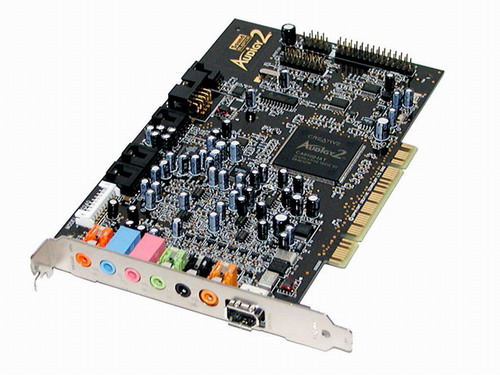
If you're a big gamer, love watching movies, or are just someone who wants quality sound, the Audigy 2 is one of the best add-in sound cards on the market to fit those needs. This version of the Audigy 2 supports 6 channels of sound and will deliver a great listening experience in any game, and especially ones that support the Audigy 2's special features like EAX. Simply pair the Audigy 2 with the right set of speakers and you'll have the necessary tools for an exceptional listening experience. Other special Audigy 2 features include 24/96 analog playback and recording and "add-ons" like FireWire.
Runner-up: Creative Labs Sound Blaster Audigy 2 ZS (7.1) retail
Price: $84

The Audigy 2 ZS differs from the regular OEM Audigy 2 mainly in its support of 7.1 channels of sound instead of 6.1 The benefit of going to 7.1 isn't really all that huge, as there's a point you reach where continually adding more channels yields diminishing returns; that is, your surround sound experience doesn't get a whole lot better going form 6.1 to 7.1 channels, or for that matter 5.1 to 7.1 channels, depending on how sensitive your ears are. The Audigy 2 ZS is also a retail package instead of OEM, meaning you get additional bundled features, such as video games and a FireWire header.
As we've said before, there are inevitably going to be people who don't need this kind of audio processing power. For those users, we simply suggest that you use your motherboard's onboard sound controller. Some people could care less about their system's sound as long as there isn't any interference or crackling. If that fits your audio needs to a tee, then use the onboard sound controller.
Speakers
Recommendation: Logitech Z5300 THX Certified 5.1 speakersPrice: $147 shipped
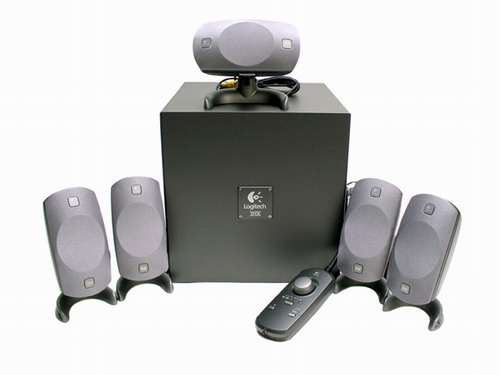
Logitech, yet again, tops our speaker recommendation this week with their popular Z5300 5.1 THX Certified speaker system. Besides obviously supporting 5.1 channels of sound, the Z5300 is able to boast such features as a 100W subwoofer and a greater than 85 dB signal to noise ratio. The surround sound gaming and movie experience is tremendous, especially paired with a good Audigy 2 sound card. These speakers can also get impressively loud, and best of all we didn't encounter any sort of crackling or distortion as volume was turned up to excruciatingly loud levels. For the price, these speakers are unbeatable.
Runner-up: Creative Labs THX Certified 6.1 speakers
Price: $245 shipped
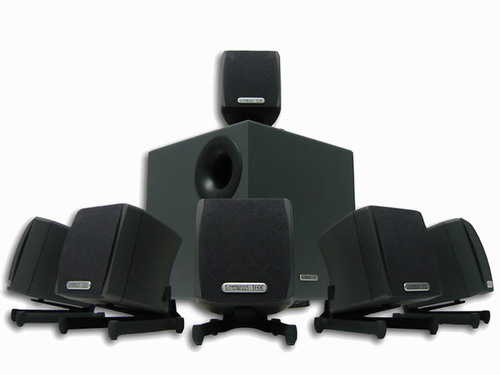
This speaker system justifies its value versus the Logitech Z5300 speakers with:
- 6.1 surround sound instead of 5.1 surround.
- 99 dB signal to noise ratio instead of "somewhere" over 85 dB.
- 150W subwoofer instead of 100W subwoofer.
- 70W per satellite and 75W for the center instead of 35W and 39W center.
- Positional audio support.
If, for whatever reason, you're not interested in high-end sound and will be gaming or watching movies mostly with your headphones on, obviously an expensive surround sound system will be pretty useless. If that's the case, you may just want to opt for 2.0 or 2.1 speakers, such as the ones recommended in our Budget Guide.
Cutting Edge System (continued)
Networking
Recommendation: Onboard solutionPrice: $0
Whichever motherboard you choose, we suggest you utilize your onboard Ethernet controller for Internet. Both the ASUS K8V Deluxe and ABIT IC7-G come with an onboard Ethernet controller; in fact, an onboard Gigabit Ethernet controller to be exact, capable of 10/100/1000 Mbps transfer speeds instead of just 10/100 Mbps transfer speeds. Gigabit technology itself doesn't do anything to literally speed up your Internet experience, but users who have multiple computers connected to each other (in a basic home network, for example) can transfer large amounts of data to and from systems much more quickly with Gigabit. You can always create your own home gateway by going dual LAN, but again, that choice is completely based upon your specific networking needs.
Hard Drive(s)
Recommendation: Western Digital Raptor 36.7GB 10,000RPM SATAPrice: $116 shipped
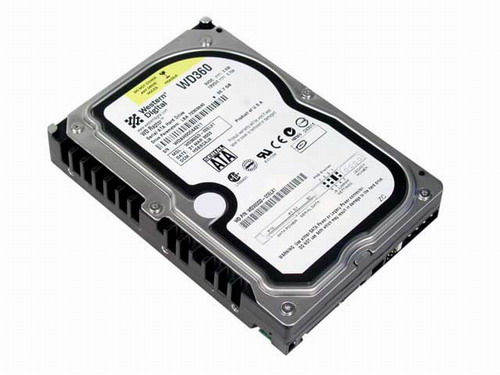
For the third week in a row, Western Digital tops our recommendation for desktop hard drives. This week, it's their Serial ATA Raptor hard drives. The 36.7GB Raptor is outfitted with features such as an 8MB buffer and 10,000RPM spindle, and a big bonus by going with a 5-year warranty. Previously, these features were only to be found on enterprise/SCSI drives, but thanks to WD, they have finally reached the mainstream desktop, more or less. The only "problem" with Raptor drives is that they just don't store a lot of data, with only 36.7GB and 74GB versions of the Raptor currently available. If you can't live with just 36.7GB, then you'll have to opt for a 74GB drive or even multiple hard drives.
There is no runner-up in today's category because the Raptor is in a class of its own at the moment. We could always tell you to go out and pick up a nice SCSI drive, from Fujitsu as one example, but we'd also then have to tell you to pick up U320 SCSI controller/cables as well. They're not terribly expensive - the cost of ownership has definitely drastically come down compared to a few years ago, but it may just not be worth the money for the usually minimal performance gain you'll experience. All in all, we'd stick with the Raptors for your cutting edge system for now. If you're a storage freak, then you should look at ATA 120GB, 200GB, etc. hard drives.
Optical Storage
Recommendation: Sony DRU-530A DVD-/+RWPrice: $155 shipped
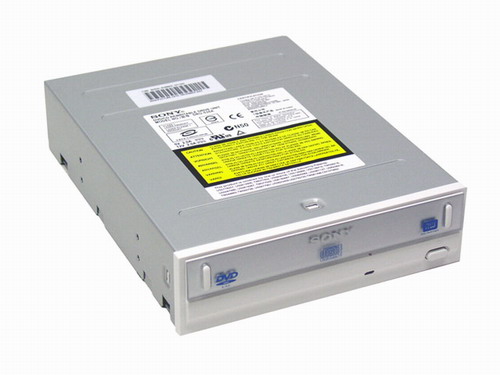
Sony's DRU-530A is basically an improved version of their legendary DRU-500A drive, the first dual format DVD writer ever available. Originally, you had to choose between DVD-R/RW and DVD+R/RW drives, but Sony changed that for good with the DRU-500A. Not only that, but their dual drives were available months before the competition. Anyway, the DR-530A is one of the fastest DVD writers currently available; in fact, with the latest firmware update released just a few days ago (version 2.0A), the DRU-530A (and DRX530UL) is now able to record at 8X maximum on DVD-R media and 4X maximum on DVD-RW media with the appropriate speed rated media. Overall, you're getting a performance boost for free with the firmware update, and therefore one heck of a speed demon DVD writer. This is not to mention the aesthetically pleasing exterior of the DRU-530A and good bundled software.
If you're not particularly interested in DVD writers of any kind, we suggest that a combo CD-RW/DVD-ROM drive to save a little cash or, better yet, a separate CD-RW and separate DVD-ROM drive, if you'd like to burn CDs and watch movies at the same time. Plextor, Sony or Lite-On versions of these drives will suffice. Check our previous Buyer's Guides for more information.
Keyboard and Mouse
While trivial, it's still important that you purchase the right keyboard and mouse. Different people have different preferences for a keyboard's feel and look, and the same goes for a mouse. Therefore, we suggest you personally try out and test a keyboard and a mouse for yourself. Recommending purchasing these items online is misleading, as there are too many users with different preferences for this type of thing. Visit your nearest PC outlet to try out a keyboard and mouse yourself; a Best Buy or Circuit City store should suffice. We suggest that you start with Microsoft and Logitech keyboards and mice. Make sure you also check out [i]optical[/i] mice from Microsoft and Logitech as well. A good solid optical mouse from either manufacturer should run about $20, but in some cases, can run as little as $10 if you can find the right deal.There are some great wireless optical mice out there, like the MX700 for example, but it really depends on whether you care at all about a wireless mouse and are willing to spend the money to acquire it. Most will be satisfied with a standard optical mouse from Microsoft or Logitech for gaming, as it offers identical (or better) precision and feel than most wireless mice. We are bringing up the idea of wireless mice merely because it is hugely popular with gamers nowadays.
Cutting Edge System Summary
| Hardware | Component | Price |
| CPU & Cooling | AMD Athlon 64 3400+ retail | $414 |
| Motherboard | ASUS K8V Deluxe (VIA K8T800) | $139 |
| Memory | 2 X 512MB Mushkin PC3500 CAS2 | $215 |
| Video Card | 256MB PowerColor Radeon 9800XT | $415 |
| Monitor | Samsung 1100DF DynaFlat CRT | $420 |
| Computer Case | Kingwin K11 Aluminum ATX plus $55 400W Antec PSU | $125 |
| Sound Card | Creative Labs Audigy 2 OEM | $70 |
| Speakers | Logitech Z5300 5.1 | $147 |
| Networking | Onboard Gigabit 10/100/1000 controller | $0 |
| Hard Drive | Western Digital 36.7GB Raptor SATA | $116 |
| CD-RW | Sony DRU-530A DVD-/+RW | $155 |
| Bottom Line | - | $2216 |
$2216 is the final price of our system, not including any money you'll spend on software (Windows XP Home or Professional, Office, etc.) or a keyboard and mouse.
What we've built here today is probably the fastest desktop system in the world that won't bankrupt you. We could have easily spent $5,000 to $6,000 or more to build you a faster system, but that simply wouldn't be reasonable for most people, especially considering that that system really wouldn't offer a noticeable increase in performance.
That said, go build yourself this sucker and let us know what you think.







